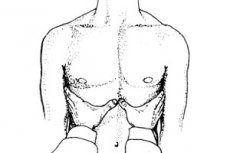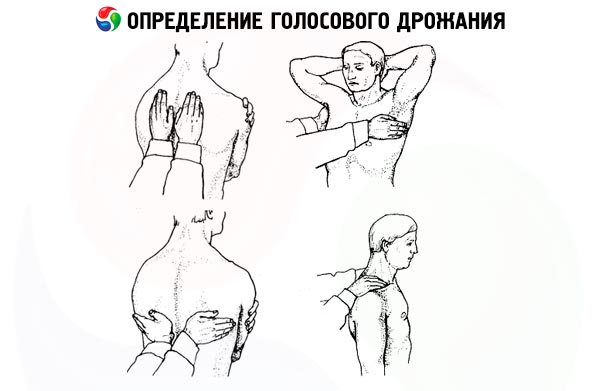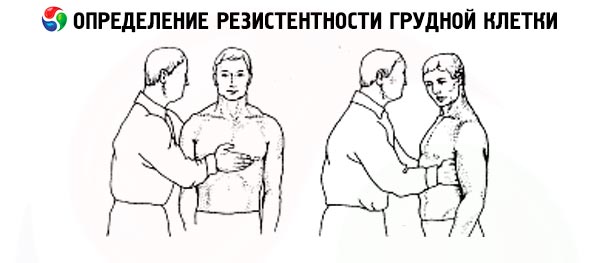Medical expert of the article
New publications
Palpation of the lungs
Last reviewed: 04.07.2025

All iLive content is medically reviewed or fact checked to ensure as much factual accuracy as possible.
We have strict sourcing guidelines and only link to reputable media sites, academic research institutions and, whenever possible, medically peer reviewed studies. Note that the numbers in parentheses ([1], [2], etc.) are clickable links to these studies.
If you feel that any of our content is inaccurate, out-of-date, or otherwise questionable, please select it and press Ctrl + Enter.

The results of the examination are supported by palpation, which is recommended to be combined with the examination. First of all, the degree of asymmetry of the chest's participation in the act of breathing is clarified: palms placed on the chest wall make the lag of the corresponding half during deep breathing more noticeable.
It is especially important to palpate the asymmetry of the conduction of vocal fremitus (fremitus pectoralis) - the vibration that occurs when the sound "R" is formed (for example, in the words "thirty-three, thirty-four"), which is most clearly felt in the upper part of the chest, closer to the trachea and large bronchi, where this vibration is formed.

A distinction is made between increased vocal fremitus, which is usually observed with compaction of the lung tissue (pneumonia, pulmonary infarction, pulmonary atelectasis ), when conditions for homogeneity and better conduction of vibration to the periphery are created. The opposite situation is heterogeneity of the vibration conduction environments, which leads to weakening of vocal fremitus, detected in the presence of fluid or gas in the pleural cavity (hydrothorax, pneumothorax ), with pulmonary emphysema.
By palpating, the doctor gets an idea of the resistance of the chest, the increase of which is observed with compaction of the lung tissue, hydrothorax, sometimes feels friction of the pleural sheets during their inflammation ( dry pleurisy ); in addition, he specifies the features of the cervical, axillary, elbow lymph nodes (for example, their enlargement with a lung tumor, tuberculosis), assesses the condition of the skin (turgor, moisture), subcutaneous tissue, muscles, determines pain points (for example, in the intercostal spaces), which is important for understanding the patient's complaints of pain, as well as a peculiar crunch when air breaks through into the subcutaneous fatty tissue ( subcutaneous emphysema ).



 [
[